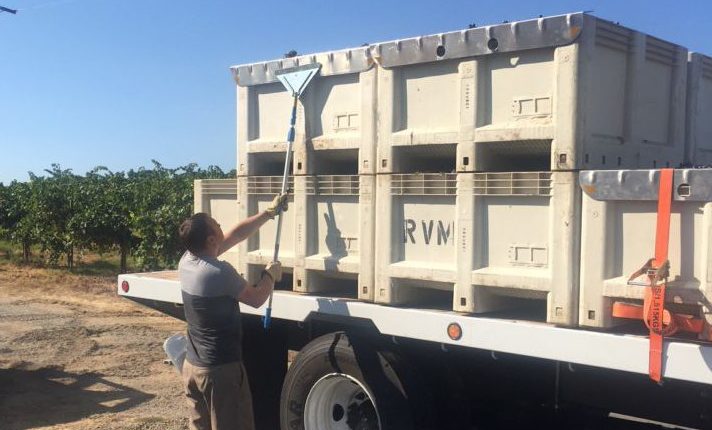The 2018 growing season wrap up
2018 was one of the more even growing seasons in recent years. Rains and warm weather in January caused the vines to threaten a very early bud break, necessitating a late January (1/26/18) pruning, but cooler temperatures after the first week in February helped push bud break out until March 23rd. As usual the Cab Franc was the first to break, followed a week later by the Petit Verdot. The Mourvèdre and Petit Sirah were last to get going in early April. Moderate temperatures and occasional spring rains spurred the vines on to some vigorous growth from the get go. Optimal temperature for grape vine growth is 77° to 95° F, and we had a good spring and early summer run in that temperature range.
If you are interested in the effect of temperature on vine growth, see: Vintage Report.
We did some suckering and shoot thinning early on and the vineyard crew was quick to get Sulphur applied after the rains. Sustained moderate temperatures caused the vines to grow rapidly and this being the first year for the new crew, they weren’t familiar with how prolific the vines at Clos du Lac can be. As a consequence the crew got a bit behind on the suckering and shoot thinning and then a late season rain required them to do some very aggressive hedging of our head-trained vines in order to make sure the anti-fungal spray was able to reach the fruit for mildew control. We did see a small amount of mildew pressure on the Cab Franc and some on the Petite Sirah, but crew was on top of it right away so very little fruit was impacted. Even with the hedging, the Petite Sirah grew like mad and in some cases we needed 3 passes of shoot thinning. Witnessing this years growth up close, has lead to a number of thoughts on how to better manage the vines going forward (hopefully more on that in a few months).
The next worry of the season was that due to the aggressive hedging we feared we might lose a lot of the crop to sunburn. Fortunately, the weather was favorable and while we had a few heat spikes, the fruit got a bit of UV exposure at moderate temps, sort of like the pre-tan that folks get before going on vacation at the beach, and so we didn’t see a lot of sunburn.
We estimated the crop conservatively this year, only planning to pull less than 50 tons of fruit from the vineyards all told, but in the end we had a much higher crop yield, and were able to harvest quite a bit of extra fruit. We were able to sell some but ultimately not all of the crop. In the end it’s far better to have extra rather than to have to short a buyer, but homeowners who see beautiful fruit go unharvested on the vine are understandably disappointed. I’ve got some thoughts about that for next year, though it really is a difficult balance to maintain.
Reviews of the fruit from buyers was very positive. The Mourvèdre for Rosé came in quite nicely, but the crop load on the remaining vines was so high that fruit took quite a while to ripen for those buyers making a traditional red. Even after we thinned the fruit, the harvest season has lasted longer than any in the past 7 years, extending into October this year for the Mourvèdre. By contrast in the drought years our harvest was complete by Labor Day.
The 2018 harvest wrapped up the second week of October. The season is ended on a strong positive note and we are already planning some vineyard improvements that can help with both efficiency and quality of the fruit for next year. I’m really excited to see what our area winemakers do with this years fruit, and am looking forward to an even higher quality crop next year.
